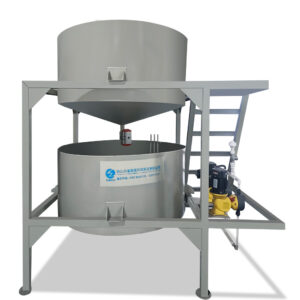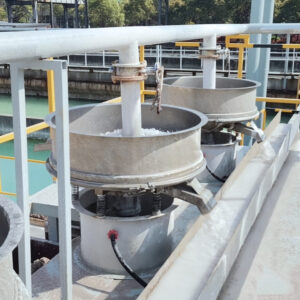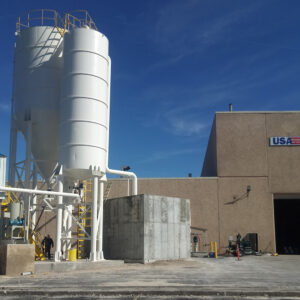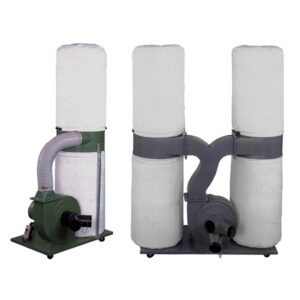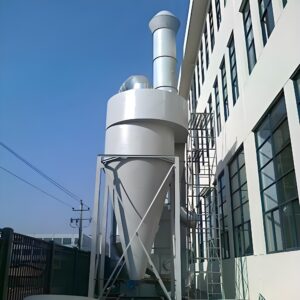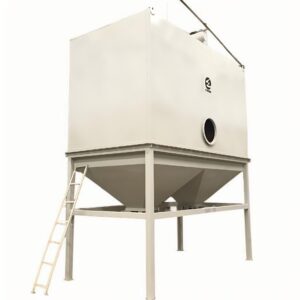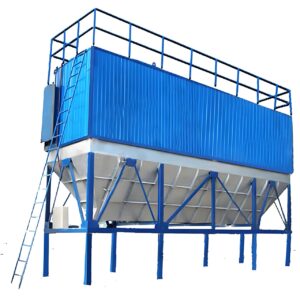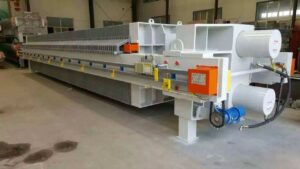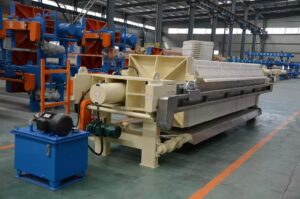Climate change is rapidly altering the landscape of water management and treatment across the globe. As extreme weather events become more frequent and intense, water utilities and treatment facilities face unprecedented challenges in ensuring a safe and reliable water supply. This article explores key strategies for adapting water treatment processes to the realities of climate change, offering insights into innovative approaches and technologies that can enhance resilience and sustainability in the face of environmental uncertainty.
The impacts of climate change on water resources are multifaceted, affecting both water quality and quantity. Rising temperatures, altered precipitation patterns, and sea-level rise are just a few of the factors complicating water treatment processes. To address these challenges, water treatment facilities must evolve, incorporating new technologies and management strategies that can withstand and adapt to changing environmental conditions.
As we delve into the complexities of climate change adaptation in water treatment, we'll explore a range of strategies, from infrastructural improvements to policy changes. These approaches aim not only to mitigate the immediate effects of climate change but also to build long-term resilience in our water systems. By understanding and implementing these key strategies, water treatment facilities can better prepare for an uncertain future, ensuring the continued provision of safe, clean water for communities worldwide.
Climate change adaptation in water treatment is not just a necessity; it's an opportunity to revolutionize our approach to water management, creating more resilient and sustainable systems for future generations.
How Can Water Treatment Facilities Assess Climate Change Risks?
The first step in adapting water treatment to climate change is understanding the specific risks faced by individual facilities. Climate change impacts can vary greatly depending on geographic location, local ecosystems, and existing infrastructure. Conducting comprehensive risk assessments is crucial for developing targeted adaptation strategies.
Risk assessments typically involve analyzing historical climate data, projecting future climate scenarios, and evaluating the potential impacts on water quality, quantity, and infrastructure. This process helps identify vulnerabilities in the current system and prioritize areas for improvement.
A thorough risk assessment should consider factors such as:
- Changes in precipitation patterns and intensity
- Increased frequency of extreme weather events
- Rising temperatures and their impact on water quality
- Sea-level rise and saltwater intrusion in coastal areas
- Changes in watershed dynamics and water availability
Effective climate change adaptation in water treatment begins with a clear understanding of local risks and vulnerabilities. Only by identifying these specific challenges can facilities develop targeted, effective solutions.
| Risk Factor | Potential Impact | Assessment Method |
|---|---|---|
| Extreme Rainfall | Increased turbidity, flooding | Historical data analysis, climate modeling |
| Drought | Water scarcity, quality deterioration | Watershed assessment, demand projections |
| Temperature Rise | Algal blooms, increased treatment needs | Water quality monitoring, thermal modeling |
By conducting thorough risk assessments, water treatment facilities can create a solid foundation for their adaptation efforts, ensuring that resources are allocated effectively to address the most pressing climate-related challenges.
What Infrastructural Improvements Can Enhance Resilience?
Adapting water treatment infrastructure to climate change often requires significant physical modifications and upgrades. These improvements aim to enhance the resilience of treatment facilities against extreme weather events and changing environmental conditions.
Key infrastructural improvements may include:
- Upgrading stormwater management systems to handle increased precipitation
- Reinforcing or relocating critical infrastructure to withstand flooding
- Implementing advanced filtration systems to deal with changing water quality
- Developing alternative water sources to enhance supply reliability
One particularly effective approach is the implementation of PORVOO's innovative water treatment systems, which are designed with climate resilience in mind. These systems offer enhanced flexibility and efficiency, crucial attributes for adapting to variable water conditions.
Infrastructure resilience is not just about withstanding extreme events; it's about creating flexible systems that can adapt to a range of future scenarios, ensuring consistent water quality and supply regardless of environmental changes.
| Improvement | Benefits | Implementation Challenges |
|---|---|---|
| Advanced Filtration | Removes emerging contaminants | High initial cost, operational complexity |
| Stormwater Management | Reduces flooding risk | Space requirements, community disruption |
| Backup Power Systems | Ensures continuity during outages | Maintenance needs, fuel storage |
Infrastructural improvements, while often costly and complex, are essential investments in the long-term sustainability and reliability of water treatment facilities. By enhancing physical resilience, these upgrades provide a foundation for other adaptation strategies.
How Can Water Conservation and Efficiency Be Improved?
Water conservation and efficiency are critical components of climate change adaptation in water treatment. As climate change threatens water availability in many regions, reducing water waste and improving usage efficiency become paramount.
Strategies for enhancing water conservation and efficiency include:
- Implementing advanced leak detection and repair programs
- Promoting water-efficient appliances and fixtures
- Developing water reuse and recycling systems
- Educating the public on water conservation practices
The Climate change adaptation in water treatment systems offer innovative solutions for water recycling, significantly reducing the demand on freshwater sources and enhancing overall system efficiency.
Water conservation is not just about reducing usage; it's about creating a culture of water stewardship that recognizes the value of this precious resource in a changing climate.
| Conservation Measure | Potential Water Savings | Implementation Complexity |
|---|---|---|
| Leak Detection | Up to 15% of supply | Moderate |
| Water-Efficient Fixtures | 20-30% per household | Low |
| Water Recycling | Up to 40% of wastewater | High |
By focusing on conservation and efficiency, water treatment facilities can reduce the strain on water resources, making their operations more resilient to climate-induced water scarcity and variability.
What Role Does Technology Play in Adaptation Strategies?
Technology is at the forefront of climate change adaptation in water treatment. Advanced technologies offer new ways to monitor, predict, and respond to climate-related challenges, enhancing the overall resilience and efficiency of water treatment systems.
Key technological advancements include:
- Real-time water quality monitoring systems
- Predictive modeling for climate impacts and water demand
- Smart water management systems using IoT and AI
- Advanced treatment technologies for emerging contaminants
These technologies enable water treatment facilities to be more proactive and responsive to changing conditions, optimizing operations and ensuring water quality even under challenging circumstances.
The integration of advanced technologies in water treatment is not just about improving current operations; it's about creating smart, adaptive systems capable of evolving with our changing climate.
| Technology | Application | Benefits |
|---|---|---|
| IoT Sensors | Real-time monitoring | Early detection of issues, optimized operations |
| AI Predictive Models | Demand forecasting | Improved resource allocation, reduced waste |
| Membrane Filtration | Advanced treatment | Removal of micropollutants, enhanced water quality |
By leveraging these technologies, water treatment facilities can enhance their ability to adapt to climate change, improving operational efficiency and water quality while reducing environmental impacts.
How Can Watershed Management Contribute to Adaptation?
Effective climate change adaptation in water treatment extends beyond the treatment facility itself to encompass the entire watershed. Watershed management plays a crucial role in ensuring water quality and quantity at the source, reducing the burden on treatment facilities.
Key watershed management strategies include:
- Implementing land use policies to protect water sources
- Restoring and preserving natural ecosystems like wetlands
- Developing green infrastructure for stormwater management
- Engaging in collaborative watershed governance
Watershed management is not just an environmental concern; it's a fundamental component of resilient water treatment, ensuring the long-term sustainability of our water resources in the face of climate change.
| Management Strategy | Impact on Water Treatment | Implementation Challenges |
|---|---|---|
| Wetland Restoration | Improved water quality, flood mitigation | Land acquisition, long-term maintenance |
| Green Infrastructure | Reduced stormwater runoff, pollutant filtration | Urban planning coordination, public acceptance |
| Collaborative Governance | Holistic resource management | Stakeholder alignment, policy development |
By focusing on watershed management, water treatment facilities can address climate change impacts at their source, potentially reducing treatment needs and enhancing overall system resilience.
What Policy and Regulatory Changes Are Needed?
Adapting water treatment to climate change requires supportive policy and regulatory frameworks. These frameworks should encourage innovation, facilitate investment in resilience, and ensure that water treatment facilities are prepared for future climate scenarios.
Key policy and regulatory considerations include:
- Updating water quality standards to reflect changing environmental conditions
- Implementing flexible permitting processes that account for climate variability
- Developing funding mechanisms for climate adaptation projects
- Mandating climate risk assessments and adaptation planning for water utilities
Effective climate change adaptation in water treatment requires a regulatory environment that is as dynamic and forward-thinking as the challenges we face.
| Policy Area | Objective | Potential Challenges |
|---|---|---|
| Water Quality Standards | Reflect emerging contaminants and climate impacts | Scientific uncertainty, regulatory inertia |
| Adaptation Funding | Support infrastructure improvements | Budget constraints, competing priorities |
| Risk Assessment Mandates | Ensure proactive planning | Resource requirements, standardization |
By implementing supportive policies and regulations, governments can create an environment that encourages and facilitates climate change adaptation in the water treatment sector.
How Can Public Engagement Support Adaptation Efforts?
Public engagement is a critical yet often overlooked aspect of climate change adaptation in water treatment. Engaging the community in adaptation efforts can lead to greater support for initiatives, improved water conservation, and a more resilient water system overall.
Effective public engagement strategies include:
- Educational campaigns on climate impacts on water resources
- Participatory decision-making processes for adaptation planning
- Citizen science programs for water quality monitoring
- Transparent communication about water treatment challenges and solutions
Public engagement in water treatment adaptation is not just about informing; it's about creating a shared responsibility for water stewardship in a changing climate.
| Engagement Method | Benefits | Implementation Considerations |
|---|---|---|
| Educational Campaigns | Increased water conservation, public support | Message clarity, reach effectiveness |
| Participatory Planning | Community buy-in, diverse perspectives | Time-intensive, potential for conflict |
| Citizen Science | Extended monitoring capacity, public awareness | Data quality control, volunteer management |
By actively engaging the public, water treatment facilities can build stronger community support for adaptation efforts, fostering a culture of water conservation and environmental stewardship.
Conclusion
Adapting water treatment to climate change is a complex but essential undertaking. It requires a multifaceted approach that encompasses infrastructure improvements, technological innovation, watershed management, policy changes, and public engagement. By implementing these key strategies, water treatment facilities can enhance their resilience to climate impacts, ensuring the continued provision of safe, clean water in an uncertain future.
The challenges posed by climate change to water treatment are significant, but they also present opportunities for innovation and improvement. By embracing adaptive strategies and technologies, such as those offered by PORVOO, water treatment facilities can not only mitigate the risks associated with climate change but also enhance their overall efficiency and sustainability.
As we move forward, it's crucial that water treatment facilities, policymakers, and communities work together to implement comprehensive adaptation strategies. Only through collaborative efforts and forward-thinking approaches can we ensure the resilience of our water treatment systems in the face of climate change, safeguarding this vital resource for generations to come.
External Resources
Climate Change and Water – Comprehensive overview by the US EPA on climate change impacts on water resources and adaptation strategies.
Climate Resilient Water Safety Plans – WHO guidance on integrating climate resilience into water safety planning.
Water and Climate Change – World Bank resources on climate change adaptation in the water sector.
Climate Change Adaptation and Water – OECD analysis on policy approaches for climate change adaptation in water management.
Climate-Smart Agriculture Sourcebook: Water Management – FAO resource on water management strategies for climate change adaptation.
Creating Resilient Water Utilities – EPA initiative providing tools and resources for water utilities to enhance climate resilience.


